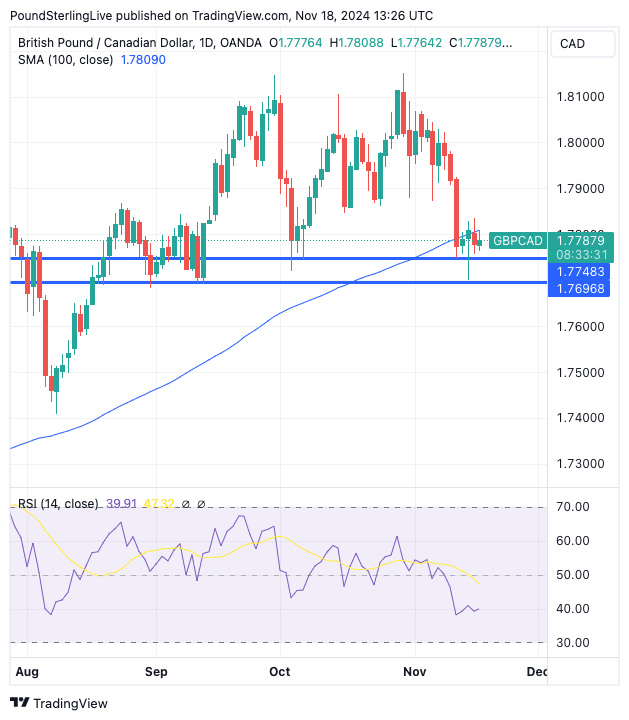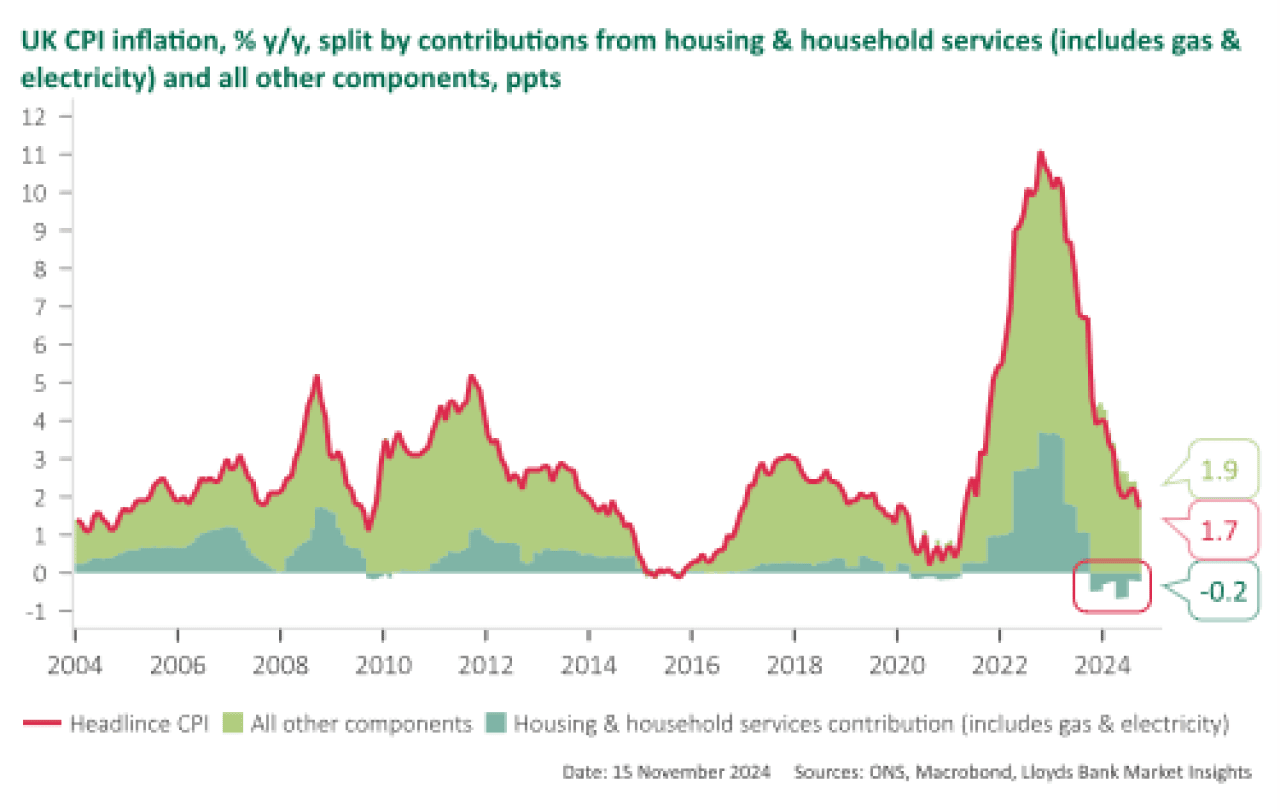Pound to Canadian Dollar Forecast: Door Opens for a Recovery in the Week Ahead
- Written by: Gary Howes

Image © Adobe Stock
The Canadian Dollar can give back some recently lost ground to the Pound in the coming days.
The Pound to Canadian Dollar exchange rate (GBP/CAD) has fallen 1.0% in November amidst broader CAD outperformance linked to Donald Trump's win in the U.S. elections, but some analysts say the 'Trump trade' is due for a breather.
Recent forex market developments show traders have tied CAD to the fate of the U.S. Dollar, judging that an expected boost to the U.S. economy can bolster that of Canada.
CAD is, therefore, acting like a USD proxy, and with the USD tearing higher, the CAD has benefited.
"We think CAD can do OK, especially if it gets caught in the updraught of higher U.S. growth," says a note from JP Morgan's FX trading desk.
From a technical perspective, it looks like the longer-term trend is at risk of turning the GBP/CAD trend from bullish to bearish.
Certainly, in the shorter term, further downside is possible with GBP/CAD falling below the 100-day moving average. The daily chart below shows the exchange rate settling around the 100 DMA, which offers some resistance that can cap rebounds.
The above chart also reveals some important horizontal support structures, first at 1.7748 and then at 1.7696. Recent price action suggests selloffs have found some buying interest around here, and these levels can form the lower bound of any consolidative action in the coming days.
This week's price action in GBP/CAD will depend on the broader 'Trump trade', Canadian inflation on Tuesday, UK inflation on Wednesday, and UK PMIs on Friday.
As mentioned, the CAD's near-term fortunes look heavily connected to the USD, and an extension of the USD rally can benefit the Canadian currency.
Some analysts we follow warn that the USD's 'Trump trade' advance is looking a little stretched at this point, which opens the door to a potential GBP/CAD recovery in the short term.
"To the extent that 2016 price action becomes a more dominant FX market template from here, we can conclude that many Trump-related positives are already in the price of the USD," says Valentin Marinov, Head of G10 FX Strategy at Crédit Agricole.
📈 Q2 Investment Bank Forecasts for GBP vs. CAD. See the Median, Highest and Lowest Targets for the Coming Months. Request your copy now.
We will now be on alert for Trump to spell out his policies in more detail, which we think could be the next catalyst for global forex. Until then, we could see some wait-and-see price action involving the retracement of recent USD strength.
"There is a limit to the dollar's strength," says a note from the UBS Chief Investment Office.
Canadian inflation is the focus on Tuesday, and any unforeseen strength can help the Canadian dollar find some of its own momentum.
Analysts at Canadian lender CIBC think the risks for inflation are to the downside, which could result in CAD weakness if realised.
CIBC Economics is below consensus in expecting a 0.2% m/m NSA headline reading (0.3% consensus). However, on core measures, they are in line with consensus, expecting 2.4% y/y on median and trim (or roughly 0.2% m/m) and 0.2% on ex-food/energy.
These readings would be roughly in line with their recent 3-month averages "and highlight easing inflation risks in Canada," says CIBC.
"Moving into 2025, we expect that there are increased downside risks to inflation amid i) easing MIC, ii) tepid per capita growth, iii) easing population growth," says Noah Buffam, an analyst at CIBC.
"We still have a dovish view on the BoC with an expectation of rates being cut to 2.25%," says Buffam.
UK inflation data is due on Wednesday. It is expected to have risen to 2.2% year-on-year in October from 1.7% in September, indicating an acceleration in inflation.
Economists at the Bank of England and the Office for Budget Responsibility recently upgraded their forecasts for the near term. This follows the government's announcement of a major spending increase in the October budget.
Also, household energy prices are rising again, so the easy part of the 2024 deflationary process is now behind us.
Core inflation is expected to remain at a sticky 3.2%, driven by strong services inflation. If these figures come in weaker, the pound could come under pressure, as this would open the door to a potential Bank of England interest rate cut in December.
"The services rate is set to remain hovering close to 5% y/y. A significant downside surprise would be needed to meaningfully boost the likelihood of a December rate cut," says Sam Hill, Head of Market Insights at Lloyds Bank.
Image courtesy of Lloyds Bank.
Should inflation beat expectations, the Pound-Australian Dollar exchange rate could well rally back to its recent highs as investors reinforce expectations that the Bank of England will only be able to cut at a quarterly pace in 2025, meaning just four further rate cuts are likely.
We are particularly interested in the UK's PMI data, due on Friday, as they should incorporate the fallout from the October budget.
There are reports that business sentiment and hiring intentions took a hit following the budget, and this could be reflected in a poor PMI reading. If this is the case, GBP/NZD could close the week in the red.
"In the two weeks since the budget, various big names in the UK retail and hospitality sector have warned that Reeve’s hike to employers’ national insurance contributions would led to a jump of costs to consumers. Others have indicated that it could lead to job losses," says Jane Foley, Senior FX Strategist at Rabobank.
The Bank of England could well respond to signs of a slowing economy by cutting interest rates again next month, judging that it can cut rates further without stoking inflation. It would suggest that the Bank thinks that if growth is allowed to collapse, then inflation would drastically undershoot current expectations in 2025-2026.
Any signs that it will accelerate the rate cutting process would weigh on the Pound.






